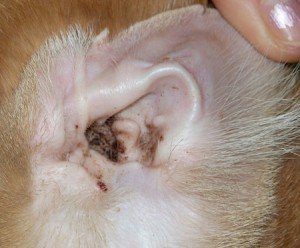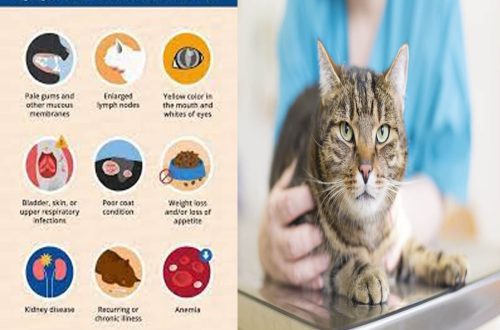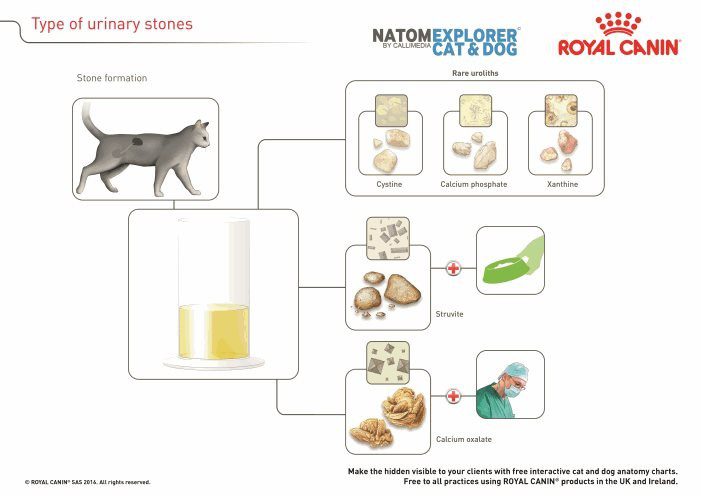
Urolithiasis in cats: symptoms and treatment of KSD
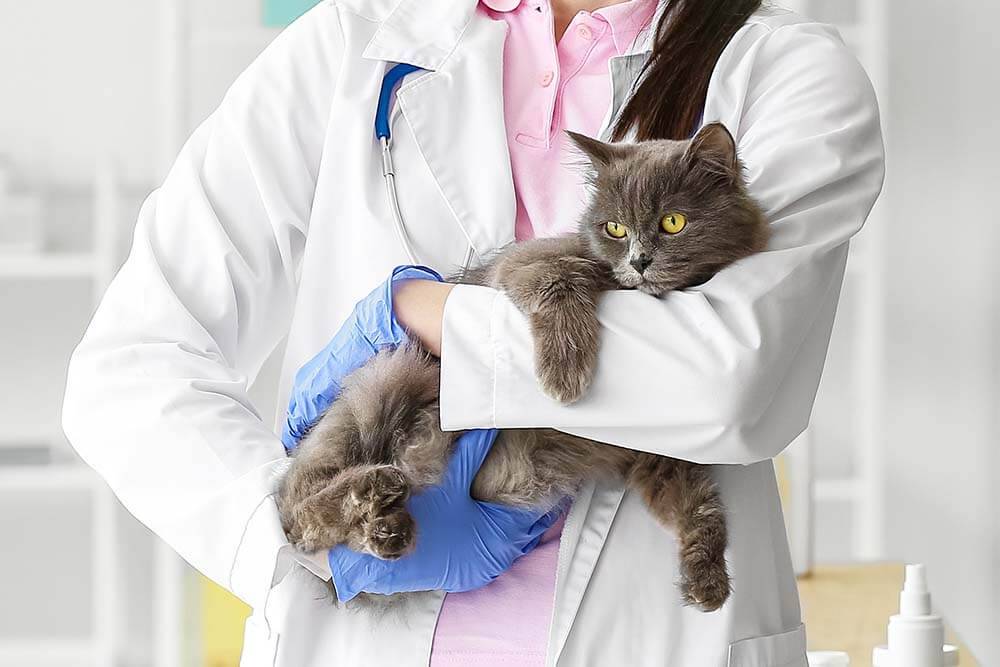
Contents
What is KSD in cats?
Urolithiasis in cats is a complex physiological process. To understand it, you need to know what urine is and the concentration of the solution.
Cat urine is a complex solution consisting of many chemical components. Some of them are calcium oxalate and ammonium phosphate. They are in the urine in dissolved form and, when the solution is supersaturated, they can precipitate, forming salt crystals.
It sounds complicated, but let’s imagine a glass of water and ordinary salt. We will pour salt into a glass. For a while, it will dissolve and saturate the water. Now the glass is not water, but a saline solution. There will come a point when the concentration of salt in the glass will be too high, and it will no longer dissolve in water and will precipitate to the bottom of the glass. The same thing happens with urine. First, the crystals precipitate, then they stick together and form stones/uroliths, causing KSD in cats.
Most often, stones form in the bladder and then gradually move along the urethra to exit with urine. But they can also occur in the renal pelvis and ureter, leading to serious deviations in the health of the pet.
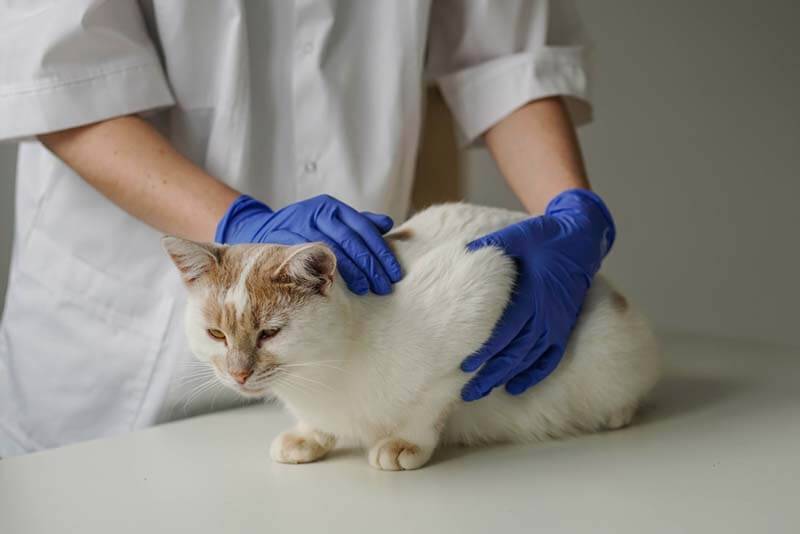
Causes of kidney stones in cats
There is no one reason that would cause urolithiasis in cats. For the formation of sediment in the urine, a whole “puzzle” of factors must be formed.
The formation of sediment can develop due to the influence of the external environment, problems with the metabolic processes of the body and due to chronic diseases of the urinary system.
First of all, it is worth noting that cats are more often treated with symptoms of problem urination than cats. This is due to the structural features of the urinary excretion pathways. In short, in cats the urethra is straight and short, while in cats it is narrow, has an S-curve and is long. Therefore, cats suffer from the excretion of sand in the urine much more often than cats.
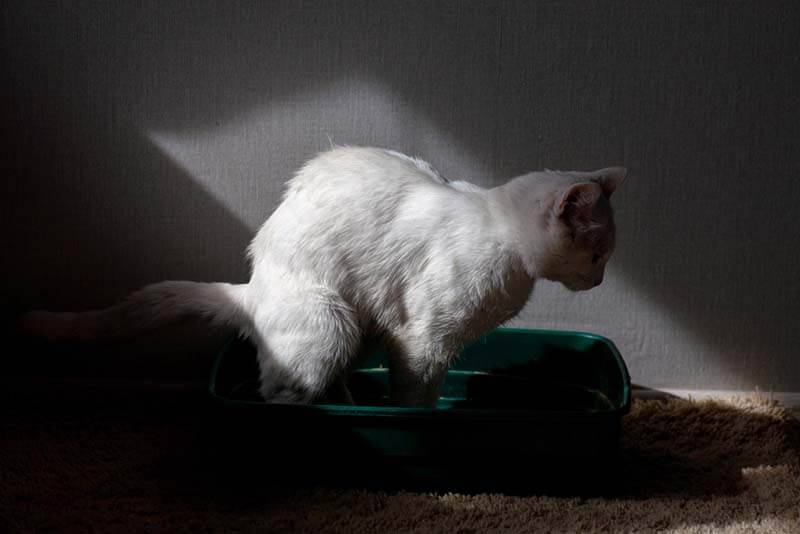
Causes that can lead to the development of urolithiasis in cats, that is, the formation of stones:
Sedentary lifestyle. If the pet is limited to short games, small movement around the apartment, he is at risk for the development of ICD.
Food rich in protein. A cat cannot eat only meat. Protein increases the level of urea in the blood, and, as a result, metabolic processes are disturbed with the formation of salt crystals in acidic urine.
Vegetarianism. It will cause the opposite effect than with an excess of protein, and alkaline-type stones will appear.
Poor quality dry food.
Low water consumption. Recall the experiment with salt in a glass. So, if the cat drinks little, urine becomes more concentrated with each meal, so it is important to “add water to the glass” to reduce the concentration of urine.
Environmental changes, due to which the cat rarely urinates. It can be stress, heat or vice versa cold. Starvation or lack of water also lead to problems.
Parathyroid hormone. It is produced by the parathyroid gland to increase the level of calcium in the blood and urine, therefore, when it is in excess, calcium crystals will appear in the urine. Examination will reveal oxalates in the urine of a cat.
Breed predisposition. Exotic breeds are genetically predisposed to developing kidney stones, as most of them cannot adapt to new climatic conditions. For example, Persian, Burmese, Himalayan, Siamese, Maine Coon, British and Scottish cats.
Chronic infections of the urinary system – cystitis, nephritis.
Chronic inflammation of the gastrointestinal tract. Gastritis and colitis lead to a violation of the acid-base balance in the cat’s body, which reduces the excretion of calcium from it. And earlier we said that an excess of calcium will lead to the formation of oxalates.
Excess weight. It is accompanied by a lack of mobility and a violation of metabolic processes.
Put together like a puzzle, several factors cause the slow formation of kidney stones in a cat. Or sand is formed in the bladder.
Types of disease
The type of disease depends on the type of stones that form in the urine of cats. The two most common types of urinary stones in cats are struvite and oxalate.
It is quite important to determine the type of salts in order to prescribe the correct treatment and identify the cause of their formation.
Oxalates
Oxalates in cats are formed in acidic urine. They crystallize quickly, have an irregular shape and sharp edges. The stones contain a large amount of calcium and oxalic acid. Provoke the formation of this type of stone deficiency of vitamin B6, magnesium, large amounts of vitamin C and low water intake.
These stones do not dissolve and can only be treated by removing them surgically.
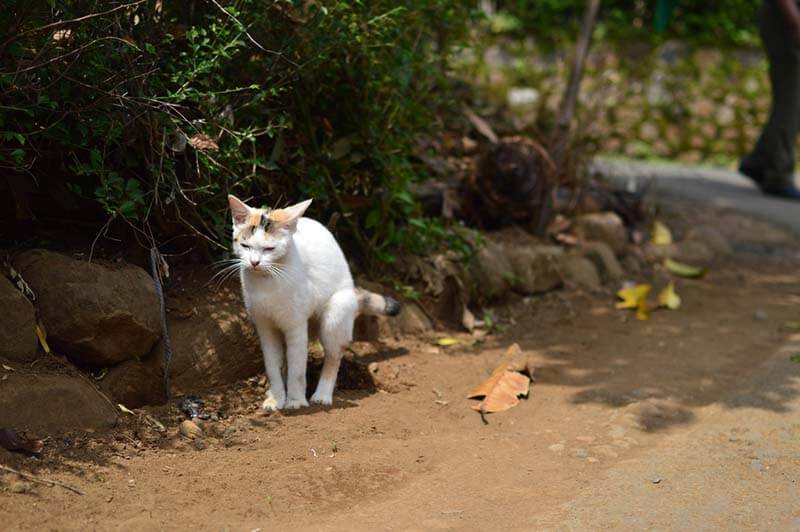
Struvites
Struvites in cats are formed in alkaline urine, they are loose, easily destroyed conglomerates. They look like smooth rectangular boxes of light yellow color. They are high in magnesium and phosphorus.
They are most often formed as a result of low water consumption. They are visible on x-rays because they are radiopaque. They dissolve fairly easily with diet and water.
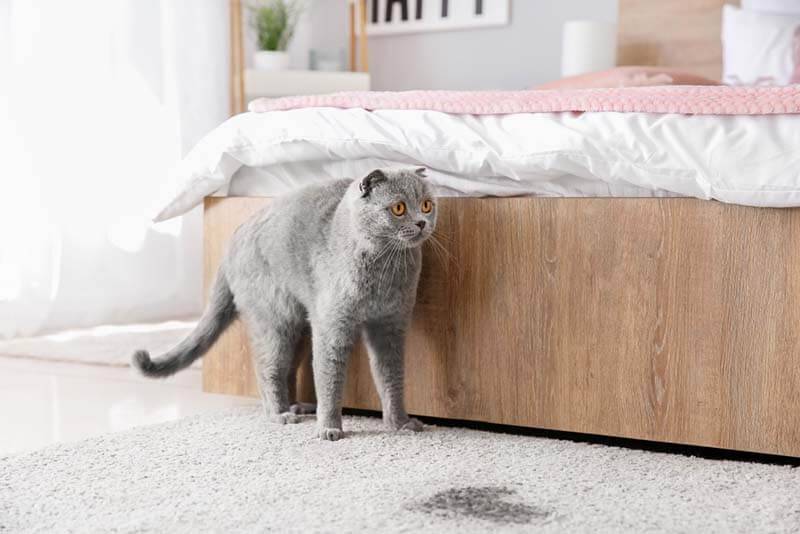
cystine
These stones are rare in cats. Formed in the acidic environment of urine, they consist of two amino acids – cystine and cysteine. Usually they appear as a result of metabolic disorders.
To eliminate them, it is enough to remove dairy products, eggs from the cat’s diet and increase the amount of sodium.
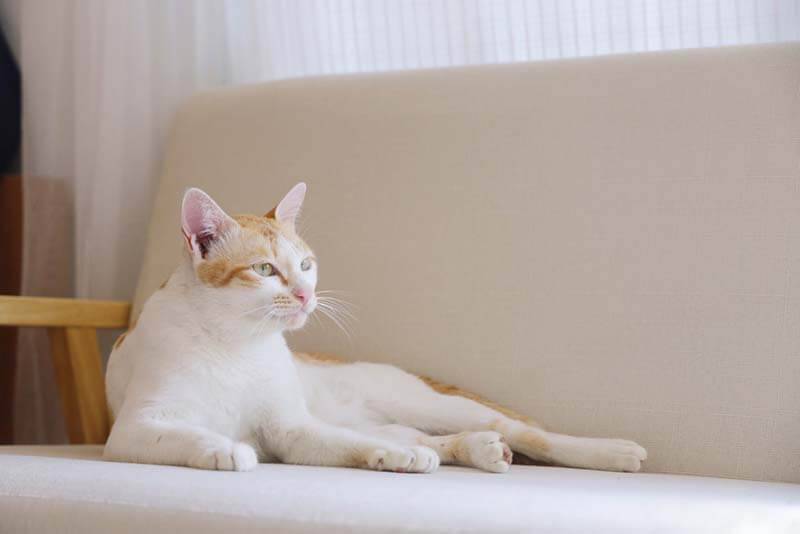
Urata
Urates in cats are salts of uric acid. Urolithiasis in cats of this type is often caused by pathologies of the liver and urinary tract infections. Also quite rare.
For correction, it is necessary to eliminate the cause – cure the liver or infection. Most often, these stones are found in young animals with a pathology such as a portosystemic shunt – this is an extra vessel in the liver that conducts blood around the portal vein.
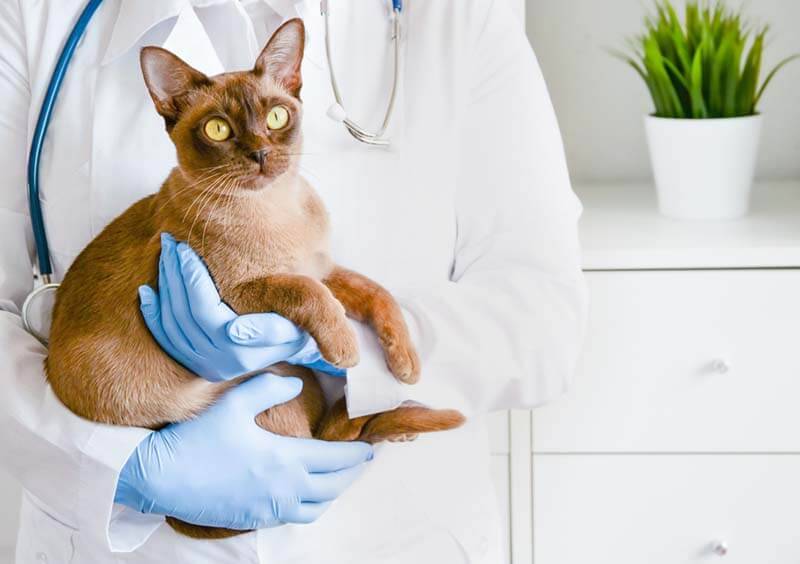
Symptoms of urolithiasis in cats
Urolithiasis in cats has characteristic symptoms. For some reason, owners often confuse them with symptoms of constipation, and often veterinarians at the reception hear from owners that the cat cannot poop, and it turns out not to be a stool at all, but a bladder disease.
We remember that stones can form in the bladder, then go with the urine and get stuck in the urethra. Or they can form in the kidneys and get stuck in the ureters.
Decreased appetite, vomiting, weight loss.
Symptoms of kidney stones in a cat may not appear for a long time. Often these are accidental findings when diagnosing a pet. Symptoms begin to appear if the stone interferes with the functioning of the kidney.
Anuria. If the kidney function is impaired, the amount of urine produced by the cat decreases, he rarely urinates in small portions. Gradually, the cat’s condition worsens, appetite and activity decrease.
The smell of ammonia from the animal. As a result of kidney damage, the smell of ammonia from the skin and from the mouth will appear, this is due to the high concentration of urea in the blood of the animal. Often the condition is accompanied by pain in the kidney area. Without treatment, the cat dies from acute kidney injury.
Bladder stones in a cat have characteristic signs that do not appear in other diseases.
pollakiuria. Frequent, painful urination in small portions. The cat sits in the tray for a long time, scratching, screaming. Nervous, often begins to urinate in the wrong places, thus signaling that he needs help. Such symptoms are due to the fact that the sediment in the bladder scratches the mucous membrane and causes inflammation and symptoms of cystitis.
Hematuria (blood in the urine). Due to severe inflammation or mechanical trauma to the bladder, a coarse sediment can notice blood in the urine. Sometimes these are drops, if there is a lot of it, then the whole urine becomes scarlet or pink.
Dysuria – urinary incontinence. If sand and small stones begin to come out with urine through the urethra, then a blockage of the cat’s urethra may occur.
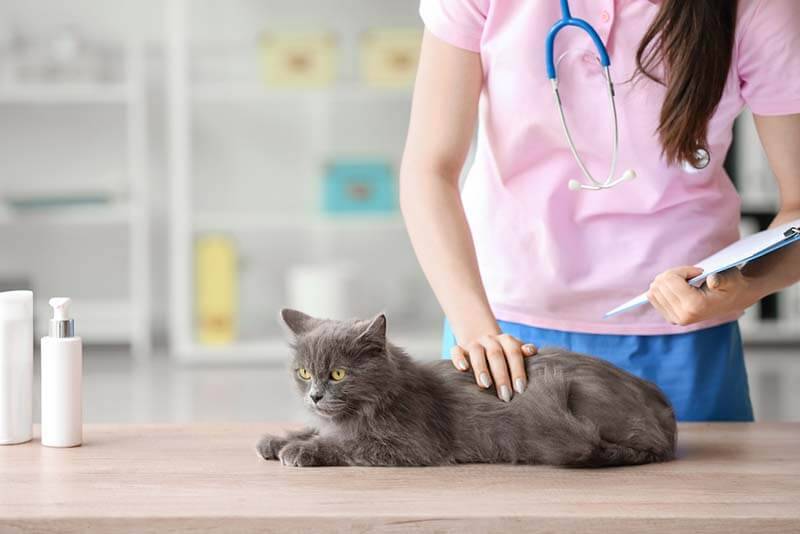
As we have previously noted, cats have a narrow and curved urethra.
Because of this, sand often accumulates at the bend and forms a plug, which stops the outflow of urine from the bladder. Symptoms will be similar to cystitis, but gradually the pain intensifies, and when you try to urinate, urine will not be released at all. If the situation is not resolved, then urine can flow back into the kidneys, causing acute kidney injury.
The bladder is like a ball, and it has its limit. If you overfill it with urine, it will burst sooner or later. Immediately, the cat develops acute pain, lack of consciousness, and as a result, the cat may die.
Therefore, it is extremely important to contact a veterinarian in time and get help.
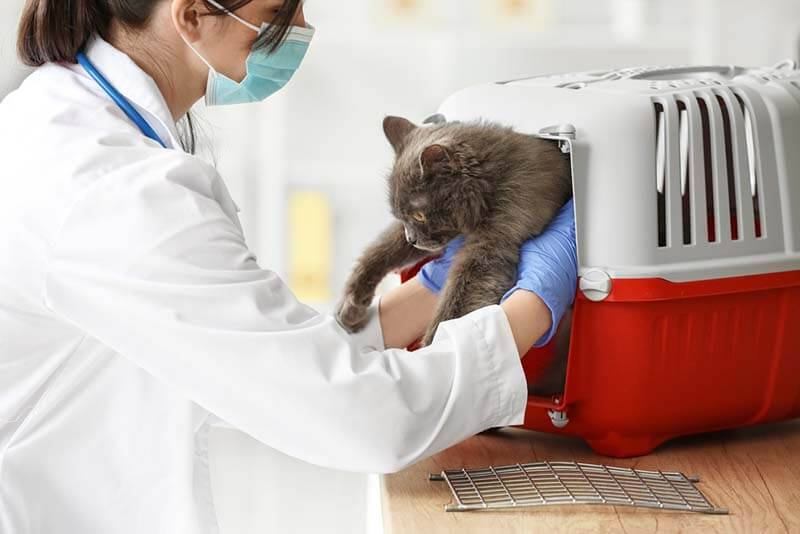
Diagnostics
Urolithiasis in cats is diagnosed quite simply.
The first signs can be seen on an ultrasound scan. Ultrasound can detect sediment in the bladder. It looks about the same as if you shake a glass ball with snow inside. And also ultrasound will detect formed stones at the bottom of the urinary tract. In the same way, uroliths are found in the kidneys.
Some stones are radiopaque. And this means that they will also be clearly visible on the x-ray.
By analyzing urine, you can determine the type of salts, the acid-base value of urine and its density. This will determine the causes of the formation of stones.
It is worth noting that the presence of salt crystals in the urine does not always indicate their presence in the urinary tract, as they can form during storage of the urine sample. And vice versa. If the stone is dense and does not collapse, then there may be no salts in the urine at all.
To determine how much the disease interferes with the work of the kidneys, urine is also examined (the amount of protein and creatinine is determined) and a blood test is performed – a clinical and biochemical analysis.
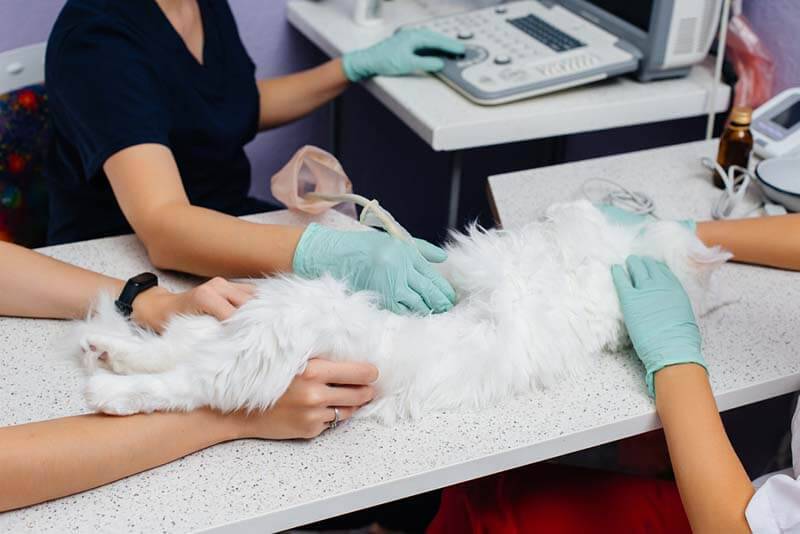
First aid for an animal
If you notice signs of urolithiasis in a cat, try to get an appointment with a doctor as soon as possible. Assess if there is urine outflow. If the cat is sitting on the tray, and not a drop of urine is excreted, unfortunately, the pet cannot be helped at home, and an urgent need to go to the clinic for washing the urethra.
If, on the contrary, small portions of urine come out with each urge, you can alleviate the condition of the cat. Increase the amount of water you drink. The more he drinks, the better.
You can give veterinary drugs to relieve spasm – Stop cystitis, Urolex or Urolesan. If against this background the condition does not improve after a few hours, consult a doctor.
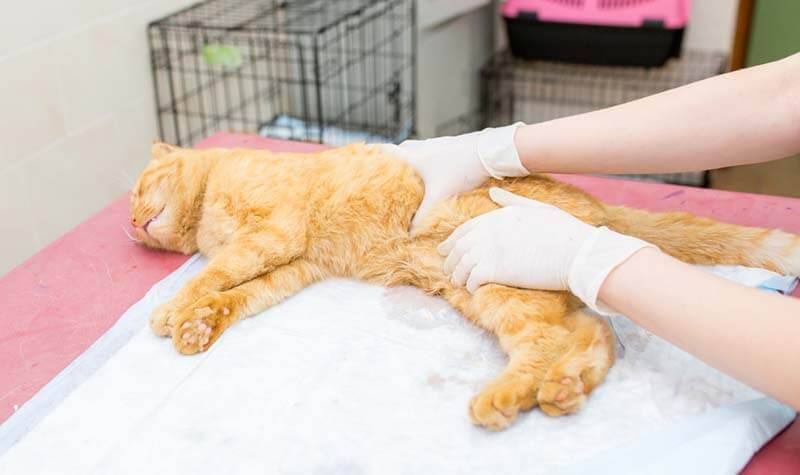
Treatment of urolithiasis in cats
Urolithiasis in cats requires an integrated approach to treatment.
All therapy is aimed at three main goals – to relieve pain and related symptoms, to restore the outflow of urine. Treatment can be surgical and therapeutic.
The first thing to do in violation of the outflow of urine is to restore it. The catheterization procedure is carried out – with a urethral catheter mechanically, with the pressure of the solution, the plug is pierced and the patency of the urethra is restored. If this cannot be done with a catheter, then an operation is performed – a urethrostomy. The surgeon removes the part of the penis with the curved part of the urethra and forms a new urethra. At the same time, they relieve symptoms of pain, inflammation, and intoxication.
If there are large stones in the bladder, they are removed.
This operation is called a cystotomy.
With kidney stones, everything is much more complicated. They cannot be removed, and if they interfere with the work of the organ, then they remove the kidney completely. If the stone is in the ureters, some clinics may perform surgery to remove them.
Sand in the bladder of a cat is most often amenable to therapeutic treatment. Prescribe drugs to relieve spasm from the urethra – Kornam, Terazosin, Driptan. Anti-inflammatory drugs – Meloxicam, Robenacoxib.
If there are signs of bacterial cystitis, antibiotics will not do without. Also, an important purpose will be the control of water consumption, normally a cat should drink 20-40 ml per kg of body weight per day.
After determining the type of salts in the sand, a special diet is prescribed to dissolve the sediment.
Treatment of urolithiasis after the removal of an acute condition does not end. Further, throughout the life of the cat, it is necessary to monitor the condition of the bladder, kidneys, the chemical composition of urine and periodically adjust the diet to maintain remission. Monitoring and regular medical examination of the pet will help to avoid repeated relapses of acute symptoms.
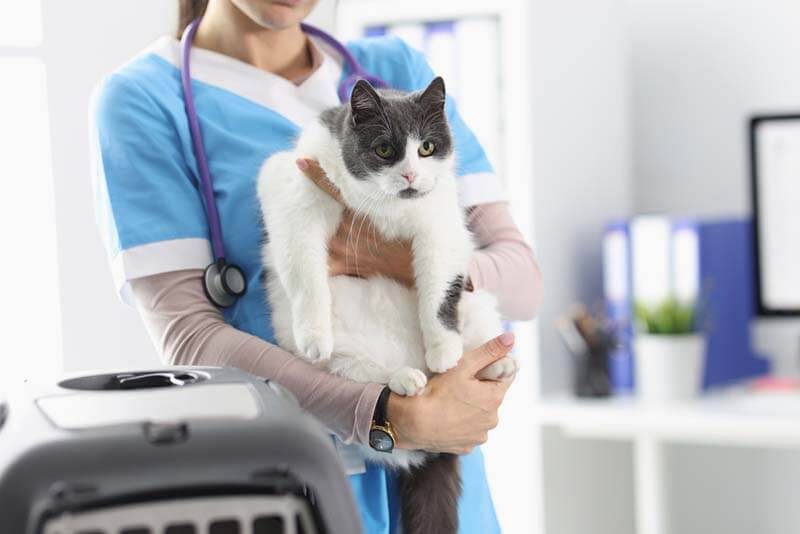
Prevention of urolithiasis in cats
Urolithiasis in cats can be prevented. To do this, properly feed the cat. Use only balanced food that is suitable for the age and weight of your pet. For castrated individuals, a special diet is also selected.
If the cat eats natural food, consult a nutritionist and keep a balance of calories, proteins, fats and carbohydrates, not forgetting the addition of vitamins and trace elements.
Control your cat’s weight and activity. It is important not to allow obesity and laziness to develop.
Control your drinking regimen.
It is important that the cat drinks its daily allowance. You can try to find out what your cat prefers – a drinking fountain or flowing water, a large volume of water and a large bowl, bucket, aquarium. You can add a drop of milk, a decoction of meat or shrimp to the water to make it seem attractive, and the cat drank more of it.
Manufacturers are also trying to solve this problem and use additives in feed that increase thirst, and some even create special additives – for example, Proplan Hydra Care. Another way to increase the amount of moisture your cat consumes is to increase the amount of wet food in the diet.
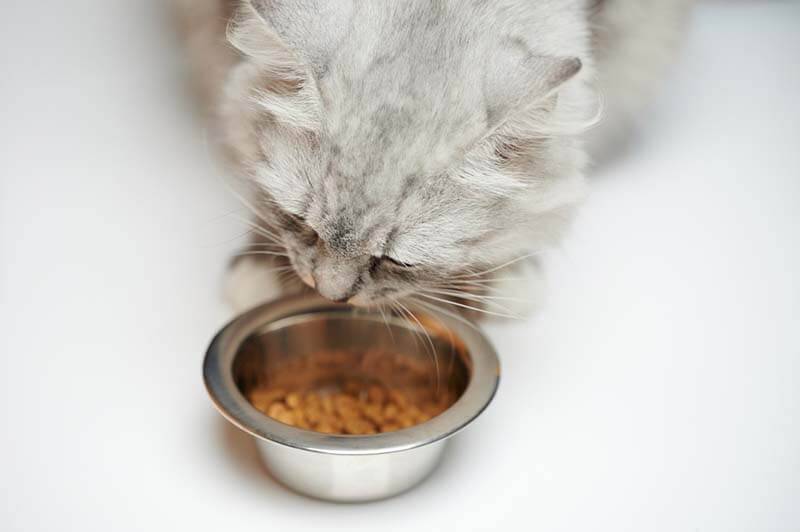
Keep the tray clean. If it seems dirty to a cat, she will try to urinate less often.
Visit the veterinarian regularly, conduct a urine test and do an ultrasound of the bladder.
ICD in cats is the main thing
Urolithiasis is a common diagnosis in a pet older than 1-6 years, more common in males.
Symptoms of KSD in cats are frequent painful urination, bloody urination, change in color, portions of urine or smell. Pet anxiety, pain and decreased appetite.
KSD in cats requires an integrated approach to treatment with the use of antispasmodics, painkillers, diet, antibiotics, and sometimes surgical procedures.
Cats suffering from urolithiasis require lifelong monitoring by a veterinarian.
To reduce the risk of developing KSD, it is necessary to follow a balanced diet, drinking regimen and increased physical activity for the pet.
Answers to frequently asked questions
Sources:
Langston K. Diagnosis of urolithiasis. Compend Contin Educ Vet. 2008.
Lulich Yu.P. Urolithiasis of dogs and cats: diagnosis, treatment and prevention. 2015



